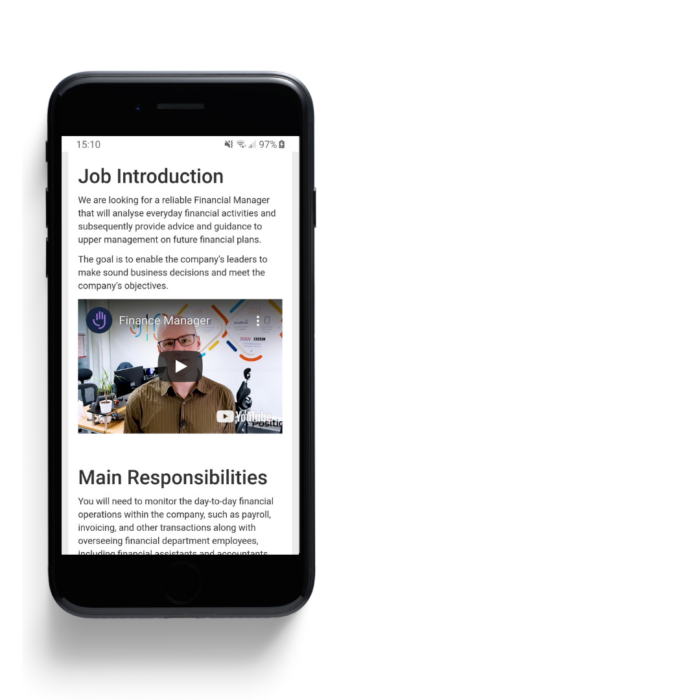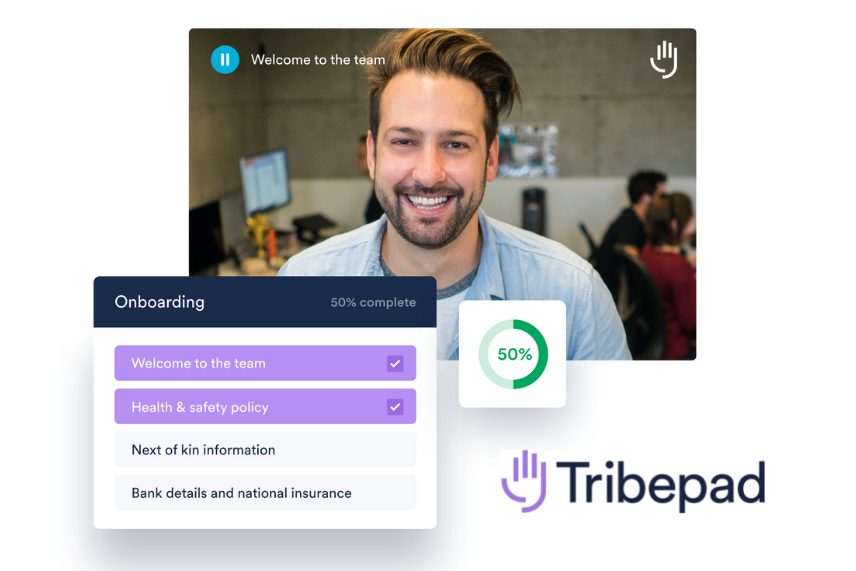Organisations with best practice onboarding programs enjoy 62% greater new hire productivity, Harvard Business Review say. Plus 50% faster time-to-proficiency and 42% lower turnover.
Improving onboarding is an open goal – but lack of clarity around best practices often holds businesses back.
Not any more…
Seven best practices for onboarding that make everyone smile
These seven best practices for onboarding are a blueprint for better first days that kickstart brilliant careers. Let’s go.
1 – Define clear lines of responsibility
Onboarding is a weird transition period. Ownership is typically fragmented and complex. It’s not clear where recruiters’ responsibility ends and HR’s starts, or where and when hiring managers should get involved.
This complex ownership can create poor accountability. Nobody steps up because they assume someone else is. Or everybody steps up, and the process descends into inconsistency and chaos.
Best practice onboarding is a seamless experience. To get there, you’ll need to
to disentangle ownership and define clear lines of responsibility.
In essence: who’s doing what, when? If you’re starting from scratch, a good starting point might be a good ol’ fashioned ideas session with champions from both HR and recruitment.
Map out your as-is onboarding process, to highlight who you’ll need to get on-side to start getting a handle on onboarding. This will also help you spot potential efficiencies and overlap, to simplify processes.
2 – Track accountability
Defining responsibility is pointless unless you hold people accountable. That’s where your onboarding technology comes in. But 36% of HR professionals believe inadequate onboarding tech holds them back from delivering best practice onboarding.
Recruitment software with good onboarding functionality is critical—whether you’re a huge enterprise or a growing business. (Onboarding for smaller businesses is often seen as a luxury but in today’s recruitment market, it can’t afford to be.)
Good onboarding tech will empower you to map your processes digitally. It’ll track candidates, recruiters’, hiring managers’ and HR’s activity, showing progress through an intuitive dashboard and sending reminders when tasks need to happen.
One of the most important onboarding best practices is personalisation. Look for software with onboarding workflows that are configurable to you, rather than wedging you into an everyone-shaped box.
Good onboarding tech should allow, say, different onboarding processes for senior hires versus junior hires. And different onboarding tasks for different recruiters.
3 – Introduce comprehensive automation
Automation is critical to best practice onboarding. The onboarding process can be a massive time-suck and often lacks consistency.
That’s a compliance consideration and an employee experience consideration. Have new starters had the right HSE and security training? How will your newest pack members feel if they fall through the cracks?
The business consequences of both can be severe. Think… costly accidents, mistakes or breaches when employees aren’t properly trained. And plummeting engagement when employees are treated like an afterthought.
Any onboarding software should introduce across-the-board automation. You spend way less time on repetitive admin; new starters spend more time enjoying the ride.
4 – Digitise contract management
If your contract management is manual and paperwork-based, digitising and automating should be an urgent priority.
Manual processes add days – maybe even weeks – onto the onboarding process. They’re inconsistent and hard to track, which is a compliance consideration. And most important, they’re a terrible candidate experience.
Best practice onboarding is fast and smooth. Automate the contract management process, so candidates get the right contract. Fast. Online.
A best practice onboarding tool should:
- Automate contract approvals
- Send reminders when action’s needed
- Create and store template contracts
- Allow you to easily add, format, edit and clone contracts
- Preview contracts before you send them
- Offer flexible contract permissions around your internal hierarchy
- Support secure, compliant e-signatures
- Remind candidates to review and complete contracts
Learn more about Tribepad onboarding.
5 – Empower candidates with a self-service portal
Good onboarding software shouldn’t only consider the recruiter and hiring manager experience. Meeting onboarding best practices means prioritising a great candidate experience too.
What’s definitely not great is the experience falling off a cliff once an offer’s made.
Look for onboarding functionality that gives you consistency, clarity and control as candidates transition into new hires.
One great way to do that is offering candidates a portal that centralises all their onboarding info. That way, they can review and re-review past documents, check outstanding tasks instantly and check their progress.
Plus, a self-service portal means your HR team will spend way less time fielding questions and directing back to previous resources. Better for candidates; better for you.
6 – Don’t just inform – engage
Best practice onboarding isn’t just orientation. That is, it’s not purely functional but experiential. You’re not just aiming to educate new starters about your processes and policies but to engage them. Build their excitement. Reinforce they’ve made a great decision joining you.
A boring, sterile onboarding process will hardly galvanise excitement. And excitement is a lynchpin of great onboarding.
Look for onboarding tech that can support you to deliver engaging content and personalised workflows. For example, maybe you embed a welcome video from your CEO and include a reminder for managers to reach out and introduce themselves personally.

This multimedia side is especially important, to help counteract the effects of onboarding remotely.
For example, maybe your in-person onboarding included face-to-face training with IT. Your onboarding software can help with some of the heavy lifting here – like, you could embed video walkthroughs of your critical systems and tools.
7 – Improve continually
Stand-out recruitment experiences are made, not born. The same’s true of onboarding. A best practice onboarding journey won’t happen overnight – but by making incremental changes and tracking progress, it will happen.
Aim to gather both quantitative and qualitative data. The first should come from robust onboarding reporting. What’s working? What’s not? Where are your bottlenecks?
Read more: A blueprint to modern recruitment reporting
Then the second is about collecting feedback from your new starters. Asking for (and acting on!) feedback is a critical onboarding best practice in its own right, addressing issues before they become disengagement-drivers.
Feedback helps you edge towards an experience that ticks more boxes for more people.
Best practice onboarding is easier than you think
None of these best practices for onboarding are groundbreaking. But that’s the power of them.
Onboarding doesn’t need to be groundbreaking – at least not as your first priority. It needs to be consistent. Coherent. Considered. The right tech gets you out of your own way, so you can reliably deliver best practice onboarding journeys that do you justice.
That’s the foundation of a first-class onboarding experience that delivers more engaged, more prepared and more productive new hires. And happier recruiters and hiring managers, who spend heaps less time faffing around with hiring admin.
Tribepad is the trusted tech ally to smart(er) recruiters everywhere. Combining ATS, CRM, Video Interviewing, and Onboarding, our talent acquisition software is a springboard for faster, fairer, better recruitment for everyone.




